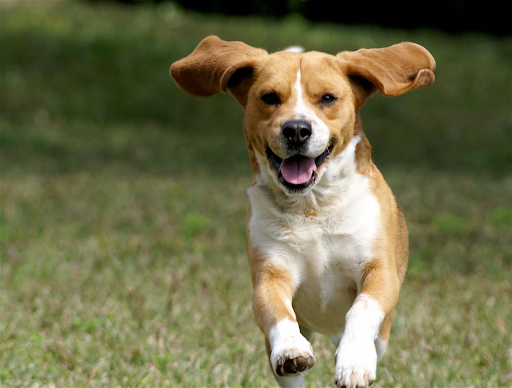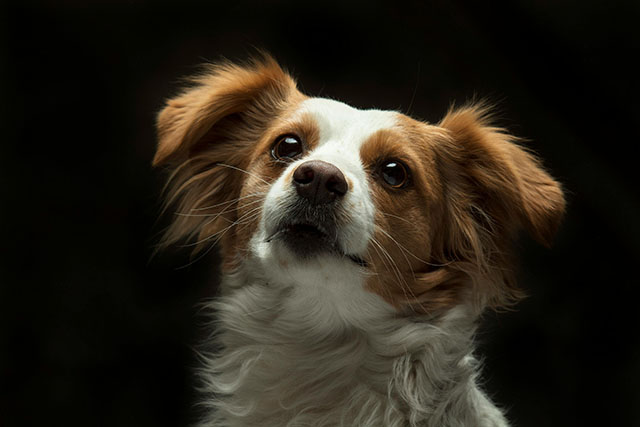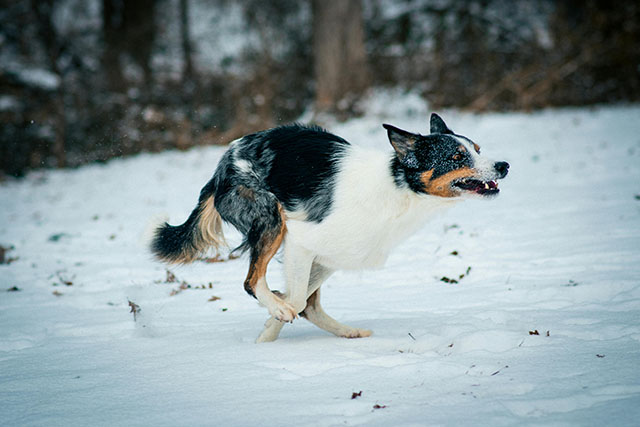If you’re a dog parent, you are probably familiar with the joys of owning your furry companion – unconditional love, loyalty, and hours of fun. But did you know that certain dog breeds require special care? This is especially true for canines with floppy ears!
While every pup is unique, breeds like basset hounds and cocker spaniels need extra attention regarding their hearing health due to their longer ear canal size. Let’s tackle why these dogs must be taken care of differently from other canine companions so they can lead happy and healthy lives.
So grab a cup of coffee (or tea!) and settle in while we explore some essential tips on keeping our floppy-eared friends safe.
What Breeds Have Naturally Floppy Ears?
Floppy ears are nature’s quirks that add uniqueness and individuality to a dog’s appearance. While many breeds can have floppy ears, some are more commonly associated with this charming feature. Here’s a list of some popular floppy-eared breeds:
1. Basset Hound
These low-riding hounds are renowned for their long, droopy ears that seem to almost touch the ground. Their floppy ears are not only adorable but also serve a purpose. They help trap scent particles, aiding their keen sense of smell.
2. Beagle
Beagles boast soft, hanging ears that complement their friendly and loving disposition. Their ears are attractive and essential for capturing scents while hunting.
3. Cocker Spaniel
The Cocker Spaniel’s silky ears frame their expressive eyes, and they are typically long and droopy. Regular grooming is vital for these beauties to prevent mats and tangles.
4. Bloodhound
Bloodhounds have incredibly long and floppy ears, which aid them in trailing scents. These gentle giants are famous for their excellent scent-tracking abilities.
5. English Setter
English Setters are known for their elegant, long, and wavy ears. These floppy ears make them look regal and are a trademark feature of the breed.
6. Dachshund
Dachshunds may have floppy ears but come in different coat varieties, including smooth and wirehaired types. Regardless of their coat, their ears are consistently adorable.
7. Cocker Spaniel
Cocker Spaniels often have long, floppy ears that add to their charm. Regular and proper ear care is essential to keep their ears looking their best.
8. Cavalier King Charles Spaniel
These affectionate little dogs have long, floppy ears that almost frame their expressive eyes. They’re known for their gentle nature and elegant appearance.
9. American Cocker Spaniel
Another Spaniel on our list, American Cocker Spaniels, has luscious, floppy ears that require regular maintenance to keep them clean and healthy.
10. Coonhound
Whether a Black and Tan Coonhound or a Redbone Coonhound, this breed often boasts long, floppy ears, contributing to their impressive scent-tracking abilities.
These are just a few of the breeds with naturally floppy ears. Remember that individual dogs may have variations in the size and shape of their ears, even within these breeds.
Do I Need to Clean My Dog’s Floppy Ears?
Absolutely! Cleaning your dog’s floppy ears is essential to their regular grooming routine. The anatomy of floppy ears makes them prone to certain issues that can be avoided or mitigated through proper cleaning.
Here are the key reasons why you should keep your dog’s floppy ears clean:
- Preventing Infections: Moisture and warmth within the ear canal create the ideal environment for bacterial or yeast infections. Regular cleaning helps remove dirt and excess wax that can contribute to these infections.
- Reducing Ear Odor: If your dog’s ears have a persistent unpleasant odor, it may be a sign of an infection or buildup of earwax. Cleaning can help eliminate this odor.
- Removing Debris: Dogs love to explore the world with their noses, and sometimes foreign bodies like grass, seeds, or insects can find their way into their ears. Cleaning can help dislodge and remove these unwanted intruders.
- Monitoring Ear Health: Cleaning your dog’s ears provides an opportunity to inspect for signs of irritation, redness, swelling, or other abnormalities. Early detection of any issues allows for prompt veterinary intervention.
- Promoting Comfort: Dogs with clean ears are generally more comfortable. Regular cleaning can alleviate itching and discomfort, ensuring your furry friend is happy and content.
What Are Dogs with Floppy Ears Prone to Getting?
Dogs with floppy ears, as adorable as they may be, are susceptible to specific health issues due to their ear anatomy. Here are some common problems you should be aware of:
- Ear Infections: As mentioned earlier, the warm and moist environment within floppy ears can lead to bacterial or yeast infections. Frequent cleaning can help prevent these painful infections.
- Ear Hematomas: An ear hematoma occurs when a blood vessel within the ear flap ruptures, causing a fluid-filled swelling. This can be caused by excessive head-shaking or ear scratching due to irritation or infection.
- Ear Mites: These tiny parasites can infest your dog’s ear canal, causing itching and discomfort. Regular cleaning and preventative treatments can help keep mites at bay.
- Foreign Objects: Objects like grass seeds, debris, or insects can become lodged in your dog’s ear, leading to irritation and infection.
- Allergies: Floppy-eared dogs may be more prone to allergies, which can manifest as ear inflammation and itching. Identifying and managing your dog’s allergies can help prevent ear issues.
- Otitis Externa: This is a common ear condition characterized by inflammation of the external ear canal. It can result from various causes, including allergies, infections, or anatomical factors.
- Earwax Buildup: Some dogs naturally produce more earwax, which can accumulate and cause discomfort or block the ear canal.
Regular monitoring of your furry companion’s ears is of utmost importance. Look out for any signs of discomfort, such as redness, swelling, discharge, or an unpleasant odor. If you spot any of these symptoms, it is crucial to consult a veterinarian promptly for a proper diagnosis and appropriate treatment. Check out this video for a more comprehensive understanding of potential causes and effective solutions.
How Do You Take Care of a Floppy Ear Dog?
Caring for a dog with floppy ears involves a combination of regular grooming, preventive measures, and attentive monitoring. Here are some essential steps to ensure your floppy-eared companion stays healthy and happy:
- Regular Ear Cleaning: Maintaining clean ears is essential to prevent dirt and bacteria buildup, which may result in ear infections. For effective ear care in dogs, consider using ARCA PET Ear Care Finger Wipes – they gently dissolve wax, dirt, and odor. These wipes are specially designed to gently and effectively eliminate dirt, wax build-up, and debris inside and around your pet’s ears. By combating unpleasant odors and irritation, they promote optimal ear health. Ensure your dog’s ears stay clean and healthy for prolonged periods, ensuring their comfort and overall well-being.
- Allergen Management: If your dog suffers from allergies, collaborate with your veterinarian to identify and effectively manage the allergens. Allergies can contribute to ear issues, so it is crucial to keep them under control. Consider using Pet Honesty’s Dog Allergy Relief Immunity – a supplement that supports your dog’s immune system, aids in managing seasonal allergies, promotes healthy skin and coat, provides itch relief, and incorporates probiotics for overall allergy support. Available in a scrumptious peanut butter flavor!
- Preventative Measures: If your dog is prone to ear infections, your vet may recommend regular ear cleaning solutions or other preventative measures to maintain ear health.
- Monitor for Discomfort: Watch for signs of discomfort or pain in your dog. If they are frequently scratching their ears, shaking their head, or showing other signs of distress, consult your vet.
- Professional Grooming: Depending on the breed, consider professional grooming, especially for breeds with long, flowing ear hair, to prevent mats and tangles.
- Healthy Diet: Maintaining overall health, including ear health, can be greatly influenced by a well-balanced diet. For dietary recommendations, it is always a good idea to consult with your veterinarian. Consider trying the Natural Balance L.I.D. With real salmon as the primary ingredient, this formula is supported by Natural Balance’s ‘Buy With Confidence’ guarantee to ensure quality, safety, and optimal nutrition with every bite.
- Regular Vet Visits: Make sure your dog has regular check-ups with the vet to catch and address any potential ear issues early on.
By following these steps and being attentive to your floppy-eared friend’s needs, you can provide them with the best care possible.
How Do You Keep Floppy Dog’s Ears Dry?
Keeping your dog’s floppy ears dry is crucial for preventing infections and other ear issues. Here are some tips to help you achieve this:
Towel Dry After Baths
Use a soft towel to gently dry their ears after bathing your dog. Ensure you get into all the nooks and crannies to remove excess moisture.
Use a Hair Dryer
You can use a hair dryer on the lowest and coolest setting to ensure complete dryness. Hold it at least a foot away from your dog’s ears and move it continuously to avoid overheating.
Ear Covers
During rainy walks or swims, you can use special ear covers designed for dogs to shield their ears from moisture. These are particularly useful for breeds prone to ear problems.
Avoid Over-Wetting
When bathing your dog, avoid allowing water into their ear canals. Use a washcloth or cotton balls to prevent water from entering.
Check and Dry After Outdoor Activities
Check and dry their ears after your dog plays in wet or muddy conditions to prevent any lingering moisture.
Monitor Ear Health
Regularly inspect your dog’s ears for signs of moisture or odor. If you notice any, address it promptly to prevent further issues.
Following these guidelines, you can enjoy many happy, ear-flapping moments with your beloved furry companion.
Jessica is a veterinary medicine student who is passionate about animals. Living with her cherished dog, Milo, deepens her understanding of the human-animal connection, enhancing her empathy as a future veterinarian.
Jessica’s concise articles reflect her dedication to improving the lives of animals and those who care for them, making her an inspiring figure in the pet care field.







